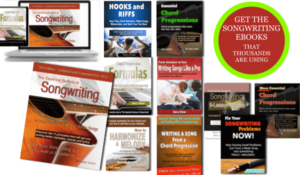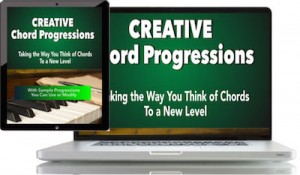There’s no denying that when it comes to lyrics, we’re in a very different world today when compared to what was being written in the earlier days of rock & roll:
“All Shook Up” (Otis Blackwell and Elvis Presley) 1957:
A well’a bless my soul
What’sa wrong with me?
I’m itchin’ like a man in a fuzzy tree
My friends say I’m actin’ wild as a bug
I’m in love
I’m all shook up
Mm mm mm, mm, yay, yay, yay
“Panda” (Sidney Selby III, Adnan Khan) 2015:
This what they all been waitin’ for
I guess so
They been waitin’ for this shit for a long time didn’t they
I’ma give it everythin’ I got
Ayo Dougie park that X6 around the corner
Ayy I’m just feelin’ my vibe right now
I’m feelin’ myself
Forget the fact for the moment that we’d never have heard “Panda” on the radio in 1957 (and Sidney (“Designer”) and Adnan would have had their mouths washed out with soap), the differences between yesterday’s and today’s lyrics couldn’t be more obvious.
 Recording your own songs, but feeling frustrated with the results? Producing may not be your biggest problem. Most production problems are actually songwriting problems. Fix your songs before you start recording them: it’s time to turn your attention to songwriting issues. Get “The Essential Secrets of Songwriting” 10-eBook Bundle.
Recording your own songs, but feeling frustrated with the results? Producing may not be your biggest problem. Most production problems are actually songwriting problems. Fix your songs before you start recording them: it’s time to turn your attention to songwriting issues. Get “The Essential Secrets of Songwriting” 10-eBook Bundle.
But on the other hand, there’s a case to be made that lyrics haven’t changed all that much. The multi-faceted job of a lyric has always been:
- to connect to the emotional soul of the listener;
- primarily to use a conversational tone;
- to create vibrant images in the mind of the listener;
- to allow the listener to put themselves in the role of the singer;
- to matter to the listener on some level.
When you take a quick glance at both lyrics above, some of those points are immediately obvious: the emotional connection, the conversational tone, and the images. The more ambiguous characteristics around mattering to the audience… well, that’s trickier to assess, but we can assume that since both these songs were successful hits, they both achieved that.
How do you write a lyric so that you know that it matters to your audience? Here are some thoughts on that as you work on your next song:
- You should be able to summarize the core purpose of your song (i.e., what it’s about) in one sentence. If it takes more than one sentence to describe what it’s about, you may be missing the mark, assuming your aim is to write a hit pop song.
- You should be able to use your lyric as the basis for a complete story. That’s not to say that your song needs to be a story condensed into song format. But if someone asked you to write a story where the song “All Shook Up” or “Panda”plays a central role, it should be possible to do.
- You should make good use of imagery, metaphor, simile and other poetic devices. Imagery is vital in songwriting, because it involves creating pictures and images in the mind of the listener with a minimum of words and phrases.
- You should notice a potential rhythmic pulse or pattern when you say the words. You may notice that there are many ways to say your lyric, each way revealing a different kind of rhythmic interplay. But in any case, the internal rhythm of your lyric should be easy to bring forward.
- You should notice that your melody helps to accentuate the natural pulse of your words. It’s important that words that need to get emphasized aren’t hidden in the mid-range of what your singer is doing.
There’s a lot more that can be said about lyrics, but probably the most important thing — the one that sums up those 5 pointers the best — is: make it sound as though your lyric is coming straight from your heart, touching the emotional soul of whoever is listening to it.
To not do that means that “All Shook Up” might have been:
Zounds!
What ails me?
I am distracted to the extent that I feel my skin is irritated whilst sitting in a somewhat indistinct tree;
My acquaintances say I am behaving as a spirited gnat might.
I’ve been smitten with love!
I am most certainly distracted!
Forsooth! Egad! Indeed!
 Written by Gary Ewer. Follow Gary on Twitter.
Written by Gary Ewer. Follow Gary on Twitter.
“The Essential Secrets of Songwriting” eBook Bundle packages explore 11 principles of songwriting, and will take your own music to a new level of excellence. Right now, download a FREE COPY of “Creative Chord Progressions”, when you get the 10-ebook Bundle.










